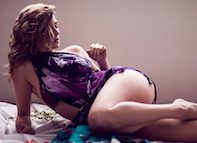The Novice's Guide to Product Photography
If a image is worth a thousand words, a stunning product picture deserves a thousand internet site visits. Although I do not have data to support that statement (yet), product photography can be extremely valuable to your ecommerce site method.
To reach your target audience members who prefer acquiring online, you also require to give your audience clear, appealing images of your items.
Yet product photography isn't as basic as directing as well as shooting. Even one of the most fundamental products require the correct equipment, lights, as well as room to generate gorgeous images that market buyers right from the purchase web page.
6 Product Photography Tips ( and also Instances) for Taking Photo That Offer
Right here are the pointers, examples, and supplies you'll require to effectively picture and market your items in such a way that makes your visitors and also potential customers want to transform.
1. Don't be afraid to use your smartphone's video camera.
This is the part where I'm expected to convince you to buy a high-end, 50-megapixel (MP) cam with a 100-millimeter screw-on lens. But I'm not going to do that.
If you already possess a electronic camera that fits this summary, take advantage of it. But also for several kinds of products, it's entirely acceptable to shoot product images on a mobile phone.
More recent smart devices boast powerful video camera lenses as well as setups that allow you to enhance your shots for the different kinds of light and environments you may shoot in.
If you need extra persuading, simply take a look at Apple's Shot On An apple iphone campaign and also the pictures that have actually arised from it throughout the years such as this:
2. Shoot from a tripod for photo uniformity.
Prior to explaining tripods, I'm bound to begin with a principal rule: Do not prop your phone versus something sturdy to intend your lens towards the subject.
It's just as well easy for this makeshift arrangement to move around during the shoot and also create disparities in your photos' appearance. If you rest your video camera on, say, a pile of publications, simply make certain this arrangement doesn't change over the course of the shoot.
There's no damage in holding your electronic camera yourself when firing just a couple of product photos for your ecommerce web site. But as your business expands, and you take much more photos of even more items, it can be difficult to standardize the product's orientation in each photo when firing handheld.
To make certain consistency across your products, you'll need a tripod. And also luckily, purchasing one isn't constantly the big, industrial-sized investment it made use of to be.
Here are 2 types of tripods to consider.
Standard vs. Flexible
This is a tradition tripod-- there are typical tripods readily available for both electronic cameras and mobile phones.
A flexible tripod can be controlled in a number of means. You can flex its legs and also place it on various surfaces to get the angle you require.
Mobile Grasp
There's usually a screw on the top of your tripod which connects to your camera to hold it in position. The bottom of many professional-grade video cameras has a screw opening just for this objective, but smartphones can utilize the complying with adapter:
The adapter grasps the sides of your mobile phone and can screw into either sort of tripod, enabling you to operate the electronic camera regulates with the phone screen dealing with outside and towards you.
As soon as you determine which mount you'll need, set it up in front of your product, as well as consider placing 3 pieces of tape on the ground to mark where you would love to maintain each leg of your tripod over the course of the shoot.
3. Select all-natural light or fabricated light.
Never take too lightly exactly how certain kinds of light can boost (or prevent) your product photography. Keep in mind, purchasers get the most effective look at an product face to face, where they can see whatever they require to prior to getting. The ideal illumination setup helps you expose those critical decision-making product functions when all web site visitors need to go on is a photo.
A solitary lighting configuration may not benefit every product-- a lighting setup that helps some items could compromise the appearance of others.
There are 2 sorts of light you can pick as your major source of light: natural as well as synthetic light.
Natural Light
Natural light describes sunshine-- straightforward as that. It's also known as "soft light" since the sun casts a larger, softer variety of light than, claim, a light beaming straight on the product. Ecommerce product shots flourish in all-natural light if:
The product is shot outside or implied to be used outside.
The product is utilized by, endured, or shot with a individual ( individuals often tend to look better in natural light).
You're attempting to stress the product's surroundings, as opposed to particular characteristics of the product.
Here's an instance of a shot utilizing all-natural light:

Artificial Light
Fabricated light consists of candle lights, fire, and also a lot more commonly, light bulbs. It's additionally referred to as " difficult light" since it creates a smaller however extra focused light surface area. This sort of light accommodates products with physical details that need to be highlighted to thrill an on the internet consumer.
As a general rule, stay with simply one type of light per photo-- all-natural or fabricated. Adding all-natural light to an artificially lit photo can soften a product that's meant to festinate, as well as including synthetic light to a normally lit photo can sharpen a product that's indicated to look soft. You do not intend to get in your very own means.
4. Fill or bounce your light to soften darkness.
Whether you utilize natural light or synthetic light, you'll need to lessen the shadows that any kind of prospective difficult light casts on the opposite end of a product.
There are 3 means to do this:
Fill Light
Consist of one more, less-intense light source to supplement your primary light. This additional light is called your fill light as well as is utilized as a counterbalance to soften the natural shadow your main light generates behind an object.
To do this, put your fill light contrary your major light so your product rests in between both light Click for info sources.
Flashbulb Bounce Card
A bounce card, or reflector card, is a little card that " shows" or "bounces" the main light back onto the surface area beneath your product to decrease shadows.
Some bounce cards affix to the flashbulb of a specialist camera lens to diffuse the light from the camera's flash. This card sprays a softer light onto the topic from above your collection-- as opposed to directly at it-- so you don't have long darkness trail behind the item you're firing.
Standalone Bounce Card
If you're shooting from a smartphone, a flashbulb bounce card isn't an option, considering that you don't have a physical flash you can affix it to. Instead, make your own standalone bounce card positioned opposite your main light source.
For beginners to product photography, this bounce card can properly change your fill light, which counters the tough light from the camera flash or light that's facing towards the front of your product.
5. Make use of a sweep or picture mode to stress the product.
There isn't one appropriate means to place your product, lights, and jump cards-- they can change significantly depending on your background. Yet do not choose a background based on what's simplest to produce. Histories need to resemble exactly how you desire your customers to regard your product when viewing it online.
Think about initially whether you 'd such as a white history or a extra dynamic, real-world background. There's an very easy means to achieve every one.
White History: Move

For white histories, it's not as straightforward as establishing a table versus white drywall. Even smart device cams can get little imperfections on a white wall surface that you would not notice with the nude eye. To capture a excellent white history with no corners or blemishes, utilize a move.
A move is a huge flexible sheet of paper, whose bottom serve as the surface area underneath your product and after that contours up right into a white wall surface behind the product.
On electronic camera, the move's curve is invisible, stressing vital product information and also enabling the item to own every one of a website visitor's focus.
Real-World Background: Portrait Mode
Dynamic, real-world histories are very enticing when capturing products that have a details use or are being modeled by a individual-- as you saw aware of the briefcase earlier in this guide.
But, it's very easy for a real-world history to steal the focus of the photo, making it unclear which thing in the photo you're actually selling.
Give your product depth and focus with picture mode, a photo setting on many expert cameras, and additionally offered on several new mobile phones. This setting obscures the background so the context of the product is clear but not competing versus the product itself.
Below is a very outstanding photo of a HubSpot pen absorbed picture mode on a Google Pixel 2 (I took this picture myself). You can inform the pen sits on a workdesk with a computer behind it, however the pen is still the focal point for customers:
6. Fire a selection of images.
My last ecommerce photography pointer to you is to not quit at one photo per product. Equally as your clients look, hold, make use of, and also even try on product in a store, your website must fire a selection of pictures to imitate this very experience.
If you're firing garments, for example, record the garment of garments alone-- that is, spread out on a white surface area-- along with on a mannequin whose color contrasts the shade of the product.
After that, for additional pictures, have the clothes modeled on a person, permitting you to take pictures of the product from the individual's various postures as well as angles.
Product Photography Set Up

Next off, allow's summarize what we just received-- here's a list of fast product photography set-up ideas that you can describe and also share on your group:
• Decide on a video camera-- whether or not that means using your mobile phone.
• Obtain a tripod that helps your cam of choice.
• Choose natural or fabricated lights-- think about which option is best for your product and also environment.
• Determine whether you'll fill or bounce light.
• Select sweep or picture mode.
• Take numerous different pictures to offer your customers selection.
Get going With Your Product Photography
Don't feel obligated to purchase every tip and also tool simultaneously. Use these product photography tips gradually to see what makes your store look the most presentable, and also alter your approach as your photography chops get better.